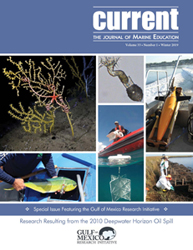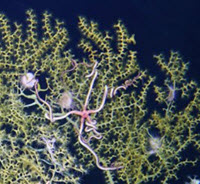Category Archives: Classroom Materials

Plankton are a very important part of the food chain in the northeastern Gulf of Mexico drift through the ocean carried by currents. Although plankton can’t control their movements against the current, they are able to maintain neutral buoyancy by increasing their surface area-to-volume ratio as well as by producing and releasing lipids (fats). In Read More
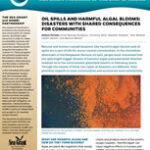
The Sea Grant Oil Spill Outreach Team released a publication that discusses the concerns that people had about harmful algae blooms (HABS) being triggered by residual oil from the Deepwater Horizon incident. HABs have occurred after oil spills in the past, but the relationship between the two is not always clear. Read Oil Spills and Read More

The Alabama Center for Ecological Resilience (ACER) blog hosted a series of posts discussing the meaning behind various terms and concepts that are important to ACER research. Diversity and Resilience Ecosystem Services Disturbance and Perturbation Bacteria and Prokaryotes Denitrification Microplankton Benthic Macrofauna Food Webs Louisiana Sweet Crude Oil and Chemical Dispersants Genetic Diversity Bioturbation Primary Read More
The Deep Sea to Coast Connectivity in the Eastern Gulf of Mexico (Deep-C) Consortium released a series of publicly available and easy-to-read fact sheets detailing their scientific research and outreach initiatives: Science: Deepwater Corals What are corals? Where and how do they live? What are the threats to Gulf corals? Click here to download. Science: Read More
The Ecosystem Impacts of Oil and Gas Inputs to the Gulf (ECOGIG) consortium worked with the Georgia Institute of Technology Center for Education Integrating Science, Mathematics, and Computing (CEISMC) to develop and test three middle school teaching modules. The modules developed are:– (7th Grade) Life Science – Data Visualization: “Under the Sea” Deep Sea Ecosystems Read More
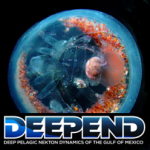
“The BP Oil Spill and Its Aftermath – Exploring Through Art” is a middle and high school level lesson plan that utilizes art to explore oil spill science. During the lesson, students will engage in discussions about the Deepwater Horizon oil spill, reflect on and create art related to the spill, and explore ongoing research Read More

This fun and creative lesson plan teaches students how researchers use oceanographic instruments called drifters to study ocean currents and then has them design and build a drifter of their own. The lesson typically spans five class periods (three for building, one for presentation, and one for testing). The lesson plan includes background information, a Read More

This lesson plan teaches middle and high school students how ocean currents transport debris, spilled oil, and other pollutants through the ocean environment. The lesson uses real data collected during the Biscayne Bay Drift Card Study (Bay Drift), a citizen science study that used Consortium for Advanced Research on Transport of Hydrocarbon in the Environment Read More
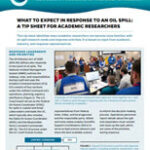
The Sea Grant Oil Spill Outreach Team released a tip sheet that discusses how academic researchers can become more familiar with priority oil spill research needs and with protocols for collecting data during response activities. Using feedback from academic, industry, and response representatives, the publication offers specific recommendations for actions that academic researchers can take Read More
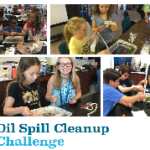
The Oil Spill Cleanup Challenge lesson plan and activity are designed to get students thinking about oil in the ocean, especially the 2010 Deepwater Horizon disaster and the challenge of oil spill response. The activity is appropriate for a wide range of ages and uses a water-filled tray to represent the Gulf of Mexico and Read More
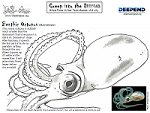
Six coloring sheets depict some of the diverse sea creatures that researchers encountered during research cruises. These coloring sheets were developed in partnership with Whale Times, Inc. for a series of summer camps based on Deep-Pelagic Nekton Dynamics (DEEPEND) consortium research called Creep into the DEEPEND. See below for free, printable PDFs! Anglerfish Coloring Sheet Read More

There is now a novel way to reach audiences and help spark their interest in ocean science that involves the very popular world of video gaming. Launched by E-Line Media in conjunction with the BBC and researchers involved with their Blue Planet II series, the single-player narrative adventure Beyond Blue takes players deep into our Read More
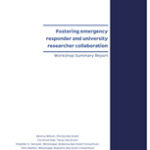
The Sea Grant Oil Spill Outreach Team a new report that draws from five workshops hosted by the Team where emergency responders and oil spill science researchers from around the Gulf of Mexico gathered to learn from one another. Workshop attendees discussed the role of academia in oil spill response, the response sector’s contributions to Read More

The Alabama Center for Ecological Resilience (ACER) Consortium fact sheet series highlights the project’s research groups and their scientific focuses. These materials can be used as a classroom resource for science teachers on in the northern Gulf Coast research and for those with a general interest in oil spill research. Introduction to ACER A brief Read More

These small, educational brochures each highlight ten practical lifestyle practices that individuals can adopt to take better care of the world’s ocean. They can act as hand-outs for people visiting a table, educational booth, or public event. These files can be printed on card stock, cut, and folded into wallet-sized cards: Ten Ways You Can Read More
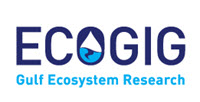
These learning activities introduce students to different deep-sea organisms living in the Gulf of Mexico. The Build a Deep-Sea Coral activity utilizes an easy craft project to get students thinking about the architecture of deep-sea corals (which is different from shallow-water corals) and the animals that live on or near the coral. Students can also Read More
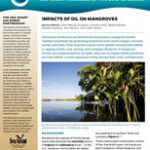
The Sea Grant Oil Spill Outreach Team released a publication that discusses various ways that oil exposure can impact mangroves, which have partially submerged root systems that make them especially sensitive to contaminants. Mangroves are widely distributed along Gulf of Mexico and Caribbean Sea coastlines, and they provide important ecosystem services such as protecting shorelines, Read More
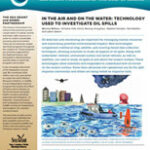
The Sea Grant Oil Spill Outreach Team released a publication on technologies that complement traditional ship, satellite, and mooring-based tools that researchers use to study oil spills, including Deepwater Horizon. These complimentary technologies include Unmanned Surface and Aerial Vehicles (USVs and UAVs), Saildrones, aerial drones, drifters, blimps, balloons, and advanced remote sensing technology. Read In Read More
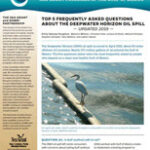
The Sea Grant Oil Spill Outreach Team released a publication that incorporates the latest science that answers the top five most frequently asked oil spill questions by people who depend on a clean and healthy Gulf of Mexico. Read Top Five Frequently Asked Questions about the Deepwater Horizon Oil Spill to learn about seafood safety, Read More
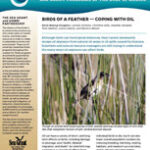
The Sea Grant Oil Spill Outreach Team released a publication that outlines what scientists have learned about how oil exposure affects birds. Using peer-reviewed research that covers oil spills around the world, the bulletin describes various effects ranging from birds directly exposed to oil to impacts on breeding and migration habits. Read Birds of a Read More

The Adventures of Zack and Molly is a four-part animated short video series that tells the story of a young man, Zack, who is more interested in the small world of his smartphone than the larger world around him. Zack’s online request for a roommate is answered by Molly, a tech-savvy Dumbo Octopus on a Read More
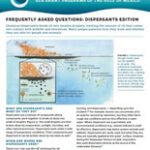
The Sea Grant Oil Spill Outreach Team released a product that concisely summarizes recent science regarding how dispersants work, how they are used, and how they affect sea life. The fact sheet also includes information on existing policies for chemical dispersants and how dispersants were used during Deepwater Horizon. Read Frequently Asked Questions: Dispersant Edition Read More
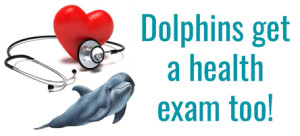
Previous research has shown that dolphins in regions affected by the Deepwater Horizon oil spill have poor body condition, reproductive failure, lung disease, and adrenal system injury. The Consortium for Advanced Research on Marine Mammal Health Assessment (CARMMHA) outreach plan was shaped by the Gulf of Mexico Research Initiative’s (GoMRI) mission to improve society’s ability Read More
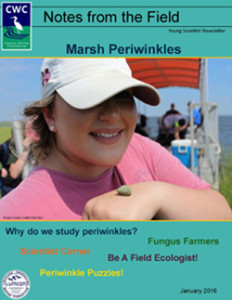
Notes from the Field is an educational newsletter created for middle school students that focuses on issues relevant to coastal communities in southeast Louisiana and the Gulf of Mexico. Exploring topics ranging from periwinkle snails to tropical storms to coastal erosion, each issue includes educational hands-on activities, puzzles, term glossaries, interviews with scientists, and scientific Read More

The Sea Grant Oil Spill Outreach Team released a publication about how oysters, which play a critical role in a healthy coastal wetland, fare when faced with oil exposure. The outreach publication also discusses how the Deepwater Horizon incident and subsequent response efforts affected oysters, a vital part of Louisiana’s seafood industry which is the Read More

The Sea Grant Oil Spill Outreach Team released a Fact Sheet that uses easy-to-understand graphics and descriptions about how some oil accumulated at shorelines, on the ocean’s surface, in an underwater plume, and on the seafloor. Where did the oil go? A Deepwater Horizon fact sheet provides a public-friendly resource for all who are interested Read More

The Sea Grant Oil Spill Outreach Team released a publication that provides helpful information about storms and oil spills. Oil and chemicals from damaged rigs and vessels can form slicks that can pollute marine and shoreline ecosystems. If there is an existing oil slick offshore during a storm, high winds and rough seas can help Read More
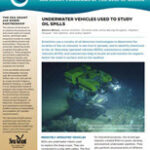
Have you ever wondered how scientists ‘see’ under water? The Gulf of Mexico Research Initiative is pleased to announce a new Sea Grant publication about the technology scientists use to look at and study the deep ocean, specifically manned and unmanned vehicles. Scientists have used remotely operated vehicles (ROVs), autonomous underwater vehicles (AUVs), and submarines, Read More
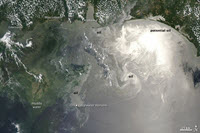
The Smithsonian’s Ocean Portal published an interactive tool featuring maps and graphics showing where Deepwater Horizon oil traveled. The story map also includes locations for where responders applied chemical dispersants on the Gulf’s surface and other sources where oil enters the Gulf, such as offshore oil and gas platforms and natural seeps. Try out the Read More

The Sea Grant Oil Spill Outreach Team released a publication that provides helpful tips for what to do if you come upon an oiled animal in the wild, including phone numbers for state-level animal-specific rescue authorities. Since even a small oil spill or leak can put certain migratory marine animals at risk for oil exposure, Read More

The Sea Grant Oil Spill Outreach Team released a publication that explains the role that microbes play in using oil as an energy source and removing it from the environment. The 8-page brochure Microbes and oil: What’s the connection? describes how these microscopic organisms can have a large-scale effect by quickly degrading oil in water Read More

Free, downloadable classroom materials covering topics ranging from bioluminescence, marine environments, hydrothermal vents, food webs and Light in the deep sea – including curricula and experiment instructions. Grades 9th – 12th Bioluminescence Candy Chemosynthesis Hydrothermal Vent Food Web Oceanographic Terms and Equipment ROV in a Bag Water-down Topographic Map Marine Environments Teaching Module Light in Read More

Free, downloadable classroom materials covering topics ranging from the BP Oil Spill and its aftermath explored through art, marine environments, hydrothermal vents, food webs and light in the deep sea – including curricula and experiment instructions! Grades 6th – 8th Hydrothermal Vent Food Web Light at the Bottom of the Deep, Dark Ocean? Marine Environments Read More
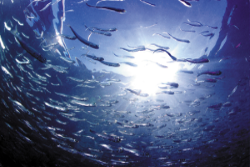
Free, downloadable classroom materials covering topics ranging from bioluminescence to hydrothermal vent food webs and include curricula, experiment instructions, and coloring sheets! Taking Science Deeper Activities Grades K – 5 Book 1: Introduction to the Deep Sea Book 2: Deep-Sea Animals Book 3: Hagfish Day! Book 4: Ocean Currents and Pollution Awareness Coloring Sheet – Read More
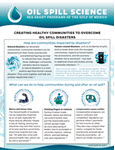
Ever wonder how individuals and communities can best recover from an oil spill? Check out our latest fact sheet. Find out what can we do to help communities during and after an oil spill. Human-caused disasters, such as accidental oil spills, tend to break down even the strongest communities. Impacts to human health, the environment, Read More
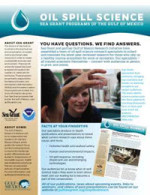
The Sea Grant Oil Spill Outreach Team is a team of oil spill science outreach specialists to collect and translate the latest peer-reviewed research for those who rely on a healthy marine ecosystem for work or recreation. Our specialists – all trained scientists themselves – connect with audiences in person, in print, and online. Our Read More
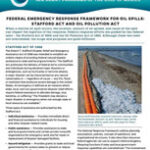
The Sea Grant Oil Spill Outreach Team released a product that gives a concise overview of the Stafford Act (1988) and the Oil Pollution Act (1990) that govern oil spill response. Also explained are how the National Response Framework, the National Contingency Plan, and the Oil Spill Liability Trust Fund fit into the picture. Read Read More
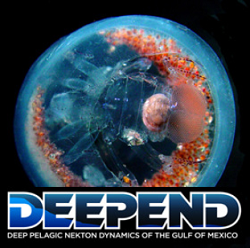
Researchers performed 99 trawl deployments (over 500 samples) during five Gulf of Mexico research cruises. The photographic timeline progresses through catches from different cruise trawls to highlight deepsea biodiversity, including some extremely rare deepsea species. Explore the timeline here!
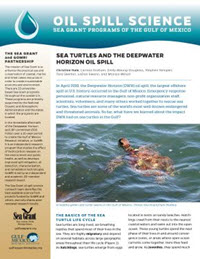
In April 2010, the Deepwater Horizon (DWH) oil spill, the largest offshore spill in U.S. history, occurred in the Gulf of Mexico. Emergency response personnel, natural resource managers, non-profit organization staff, scientists, volunteers, and many others worked together to rescue sea turtles. Sea turtles are some of the world’s most well-known endangered and threatened animals. Read More

When oil spills occur, one of the first questions is “Where will the oil go?” Pollutants, such as oil, float on the surface and move through and along with the water. Computer models are tools that help predict the path of pollutants. They help minimize oil spill impacts by estimating the landfall and movement of Read More
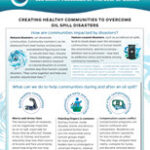
The Sea Grant Oil Spill Outreach Team released a publication that discusses how communities respond to a human-induced incident such as an oil spill as compared to natural disasters. Both types of events can affect the environment, economy, and human health; however, how people respond tends to be different. Social scientists documented a series of Read More
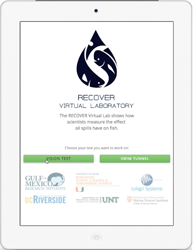
The Relationships of Effects of Cardiac Outcomes in fish for Validation of Ecological Risk (RECOVER) consortium updated their website to create an improved visitor experience, including a Virtual Reality tour of the team’s hatchery facilities. Users visiting the site on their mobile smartphone can take the free tour directly on their device using the Wonda VR Read More
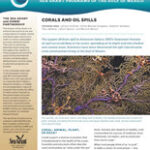
The Sea Grant Oil Spill Outreach Team released a publication that explains which corals were affected by the Deepwater Horizon incident and how scientists are monitoring those corals. The bulletin also describes the important roles that corals play in maintaining a healthy ocean and how corals worldwide struggle in the face of constant, multiple threats. Read More

The new module Nature of Science targets grades 6-12 and utilizes consortium research data to clearly describe the scientific method, including what is science, how is science conducted, and how is science communicated. The full 45-page module is available for download from the DEEPEND website and here on the GoMRI Education site.
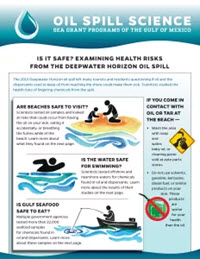
The 2010 Deepwater Horizon oil spill left many tourists and residents questioning if oil and the dispersants used to keep oil from reaching the shore could make them sick. Scientists studied the health risks of lingering chemicals from the spill. This fact sheet covers common questions, such as: Is Gulf seafood safe to eat? Are Read More
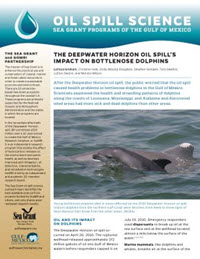
After the Deepwater Horizon oil spill, the public worried that the oil spill caused health problems in bottlenose dolphins in the Gulf of Mexico. Scientists examined the health and stranding patterns of dolphins along the coasts of Louisiana, Mississippi, and Alabama and discovered oiled areas had more sick and dead dolphins than other areas. OIL Read More
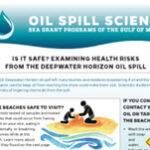
The Sea Grant Oil Spill Outreach Team released a publication that addresses the public’s questions about health safety after the Deepwater Horizon incident. The fact sheet, Is it Safe? Examining Health Risks from the Deepwater Horizon Oil Spill succinctly explains findings from peer-reviewed studies and reports from state and federal agencies that investigated the safety Read More
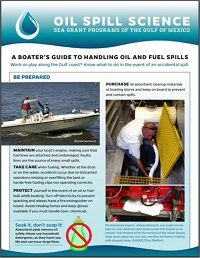
The Sea Grant Oil Spill Outreach Team released an informational brochure just in time for the summer boating season. The one-page guide gives boaters information on how to prepare for, respond to, and report an accidental oil or fuel spill on their vessels. A Boater’s Guide to Handling Oil and Fuel Spills, which is available Read More
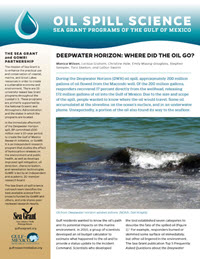
The Sea Grant Oil Spill Outreach Team released an informational publication that discusses the locations where approximate amounts of oil went after the Deepwater Horizon spill. The publication Deepwater Horizon: Where did the oil go? summarizes what researchers have discovered about where the spilled oil traveled and what processes carried it along its path. Included are response actions Read More

Scientists can use stable isotope analysis to determine stable isotope ratios in an organism’s tissues to reconstruct food webs in oiled and non-oiled coastal environments. Specifically, they collect blood and muscle tissue samples from mid-level and higher order consumers, like sharks, to find out if there was any effect of the oil on the consumer Read More
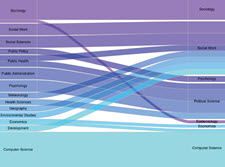
Experts at the Consortium for Resilient Gulf Communities (CRGC) come from from diverse fields. Working directly with experts outside their own fields of study enhances students’ insights about disaster, recovery, and resilience, while improving their problem solving skills and passion for their work. The two-page pamphlet describes the consortium’s efforts to provide graduate and undergraduate Read More

Recent research into Deepwater Horizon’s impacts on salt marsh fiddler crabs has been adapted for the journal’s Environmental Science Journal for Teens publication. The research team included researchers from two Louisiana State University-led projects (1, 2) and the Florida Institute of Oceanography. Read the article. Additional materials can be accessed here..

Scientists and outreach personnel created an on-line resource that examines two major oil spills in the Gulf of Mexico: The Deepwater Horizon in the northern Gulf and the Ixtoc in the southern Gulf. The Beneath the Horizon website, developed by the Center for Integrated Modeling and Analysis of Gulf Ecosystems (C-IMAGE) research group and Jake Price Productions, explores these spills, Read More

The Sea Grant Oil Spill Science Outreach Team released a new informational brochure just in time for the summer boating season. The one-page guide gives boaters information on how to prepare for, respond to, and report an accidental oil or fuel spill on their vessels. A Boater’s Guide to Handling Oil and Fuel Spills, which Read More

In the wake of Deepwater Horizon, scientists have been working diligently to understand the impacts of the oil spill on the Gulf of Mexico along with the wildlife and people that depend on it. The Relationships of Effects of Cardiac Outcomes in fish for Validation of Ecological Risk (RECOVER) consortium’s focus has been on the Read More
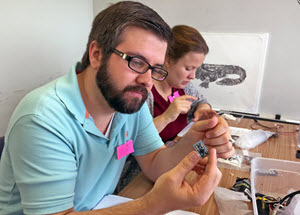
Researchers from Oregon State University, the University of New Orleans, and Proteus Technologies explained how they use ocean gliders to collect temperature, pressure, and acoustic data such as sounds made by Gulf of Mexico whales and dolphins. The Littoral Acoustic Demonstration Center – Gulf Ecological Monitoring and Modeling (LADC-GEMM) team guided the participants in constructing Read More

The Sea Grant Oil Spill Outreach Team released a new informational brochure that explores products currently available or in development to remove oil from water in future spills. The brochure Emerging Surfactants, Sorbents, and Additives for Use in Oil Spill Clean-Up addresses surfactants inspired by microbes, finding treasure in unexpected places (everyday materials), and tiny materials Read More
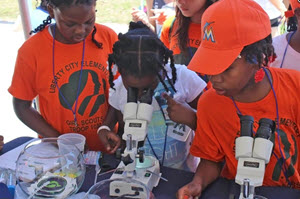
A child’s face lit up with wonder as she peered into a microscope for the first time and discovered a new world. Researchers at the Miami-based RECOVER consortium want experiences like this to happen more often for more students, so they designed and developed the RECOVER Virtual Lab. Now, scientists can engage students ages 8 Read More

A Shoreline Cleanup and Assessment Technique (SCAT) map indicates the degree of oiling at a geographic location. SCAT teams survey shorelines to collect important data that will help them analyze the amount of necessary cleanup, choose cleanup techniques, and monitor clean up effectiveness. Read the full story here.

The Sea Grant Oil Spill Outreach Team recently developed a new informational brochure that explores basic aspects of oil as a natural resource and oil spills. The synthesizes peer-reviewed science for a broad range of general audiences, particularly those who live and work across the Gulf Coast. The brochure Frequently Asked Questions Oil Edition addresses Read More

The module is the fourth in a series of marine environment-focused teaching and learning modules developed by the consortium for grades 6 – 12. This module focuses on navigating marine environments, particularly historical and current human navigation and animal navigation. The module is available for download here. This module was developed by the DEEPEND (Deep-Pelagic Nekton Read More

Deep-sea investigators served as consultants for their partner Oregon Coast Aquarium’s educational infographic about diel vertical migration – the largest animal migration phenomenon on earth. The consortium has printed several copies of the poster to distribute to teachers as well as a large banner for use during outreach events. Download your own copy of the Read More
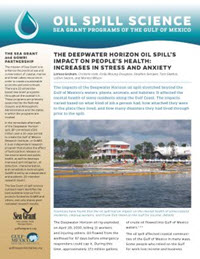
The Sea Grant Oil Spill Outreach Team released a new informational brochure about how the Deepwater Horizon oil spill affected the mental health of some Gulf Coast residents. They reviewed published science and worked with experts to develop this brochure for a broad range of audiences, particularly those who live and work across the Gulf Read More
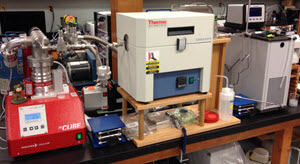
The post explains that a mass spectrometer, or mass spec for short, has become an important tool in many aspects of science including genetics, biochemistry, pharmaceuticals, environmental science, geology and ecology. The mass spec is an instrument that tells us the masses of specific chemical elements in a sample. Briefly, a mass spec works by Read More

The Sea Grant Oil Spill Outreach Team released a new informational brochure about the connection of Deepwater Horizon and fish lesions reported in the winter following the spill. The team reviewed published science and worked with experts to develop this brochure for a broad range of audiences, particularly those who live and work across the Read More

This factsheet explains not only what gene sequencing is and how it works but also how scientists use it to identify and compare bacteria in sediment samples. Remember back in high school biology when you studied genetics and learned about DNA, nucleotides and gene sequencing? Join us for this week’s Tool Talk as we clear Read More

Ecosystem Impacts of Oil and Gas Inputs to the Gulf (ECOGIG) Consortium outreach staff recently brought the Ocean Discovery Zone to Penn State’s Fan Fest for the season’s first home game. Visitors explored the Gulf’s deepwater ecosystems and learned about the importance of healthy oceans. View photos or watch a time-lapse video of the event to learn more. Read More
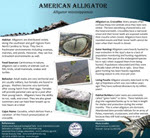
These fact sheets highlight various flora and fauna living in the south Louisiana marshes. Click the images below to download copies of these posters to share with your students. Visit the Coastal Water Consortium’s Education & Outreach website for more information. American Alligator Poster Needlerush Poster Roseate Spoonbill Poster Marsh Periwinkle Snail Poster Fiddler Crab Read More
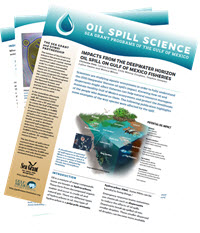
The Sea Grant oil spill science outreach team released an informational brochure about the Deepwater Horizon oil spill’s impacts on fisheries. This brochure synthesizes peer-reviewed oil spill science for a broad range of general audiences, particularly those who live and work across the Gulf Coast.The brochure Impacts From the Deepwater Horizon Oil Spill on Gulf Read More

The Deep-Pelagic Nekton Dynamics (DEEPEND) Consortium has created lesson plans for “Taking Science Deeper” Activities. Book 1: Introduction to the Deep Sea Book 2: Deep-Sea Animals Book 3: Hagfish Day! Book 4: Ocean Currents and Pollution Awareness For additional educational materials from DEEPEND, click here.
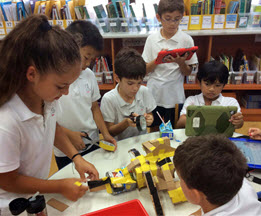
Communicating oil spill research is essential to improve society’s understanding about spills and their ability to respond to and mitigate them. The Gulf of Mexico Research Initiative (GoMRI) has been funding spill-related research since 2010. Here are ten outstanding education products and resources that GoMRI and its science community have developed to share what they Read More
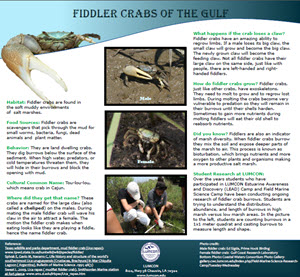
Want to know more about the fiddler crab? Click here to download the Coastal Waters Consortium (CWC) Fact Sheet on the Fiddler Crab’s habitat, food sources, behavior, cultural common name, and many more interesting facts. Over the years, students who have participated in Louisiana Universities Marine Consortium (LUMCON) Estuarine Awaremess and Discovery (LEAD) Camp and Field Marine Read More

Story posted by Nina Pruzinsky on DEEPEND’s BLOG On Friday, March 4, 2016, Mike Novotny and Nina Pruzinsky visited Mr. Kyle Lendick’s 6th grade Marine Science classes at New River Middle School. The three classes spent several weeks completing Deep-Pelagic Nekton Dynamics (DEEPEND)’s grade 6-8 lesson plans (found in the Education/Outreach section under Education, Resources, Read More
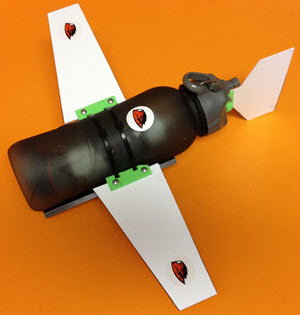
Twenty teachers turn water bottles into mini SeaGliders The research and science behind projects like Littoral Acoustic Demonstration Center – Gulf Ecological Monitoring and Modeling (LADC-GEMM) can often seem high-brow, inaccessible, and even confusing. So, one of the ways the LADC-GEMM project aims to demystify ocean science is by using the popularity of robotic ocean gliders Read More
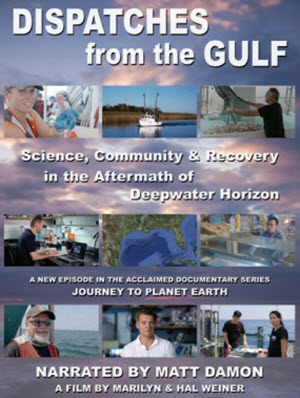
Screenscope, Inc. has completed production of three Dispatches from the Gulf documentary films, which features scientists working to better understand the effects of the Deepwater Horizon oil spill. Dispatches from the Gulf is part of the Journey to Planet Earth series and is narrated by Matt Damon. All three films and corresponding educational materials are Read More

The Sea Grant oil spill outreach team released three new informational brochures about the dispersants used to treat the Deepwater Horizon oil spill. These brochures synthesize peer-reviewed oil spill science for a broad range of general audiences, particularly those who live and work across the Gulf Coast. Chemical Dispersants and Their Role in Oil Spill Read More

The Sea Grant Oil Spill Outreach team released two new brochures that discuss Deepwater Horizon and beached oil. Top 5 Frequently Asked Questions about the Deepwater Horizon Oil Spill: Five years after the incident, tourists to the Gulf of Mexico still have questions about the oil spill. This publication addresses how the oil was cleaned Read More
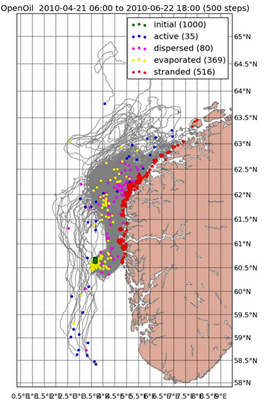
A new, open source software for modeling the trajectories and fate of particles (Lagrangian Elements) drifting in the ocean, or even in the atmosphere, has been developed a the Norwegian Meteorological Institute in cooperation with the Institute of Marine Research. The software, known as OpenDrift, is a generic framework written in Python. It is openly Read More

The lesson plans below are related to oil spill research. Some of these lesson plans are general, and it may be necessary to modify the activities for specific grade levels. Coral de las aguas profundas ‘Bichos una Aventura en Miniatura’ Golfo de Mexico EdiciÓn Modelando la Costa Extracción de Aceite Cámara Gusano “Wormcam” Alerta! Emergencia Read More
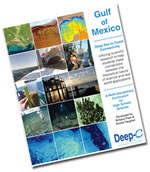
A team of scientists and education staff developed a user-friendly curriculum to help students make connections between the theoretical nature of science and real world applications. This education tool uses application-based science conducted by the Deep-C Consortium to improve Gulf of Mexico literacy and addresses issues such as environmental disasters, their impacts on ocean ecosystems, Read More
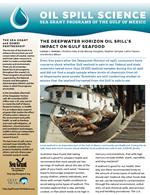
The Sea Grant Oil Spill Outreach team released two fisheries-related informational brochures that synthesize peer-reviewed oil spill science for a broad range of general audiences, particularly those whose livelihoods depend on a healthy Gulf. The Deepwater Horizon Oil Spill’s Impact on Gulf Seafood brochure presents results from federal, state, and independent seafood testing after the Read More
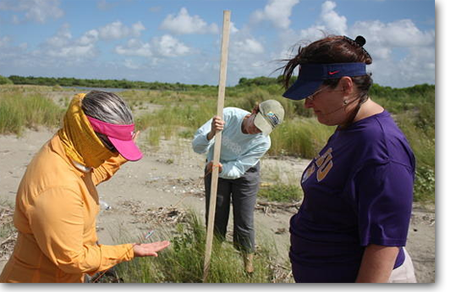
The Coastal Waters Consortium’s Education and Outreach program translates research investigating the effects of the Deepwater Horizon Oil Spill on coastal ecosystems into understandable formats for all levels of society. The program facilitates interactions of students, teachers, adults and other community members with CWC Scientists through the following initiatives and programs: K-12 Education Teacher Education Read More
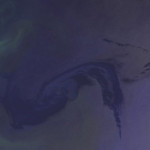
Synthetic aperture radar (SAR) is now commonly used for operational oil spill monitoring. During major spills, SAR data from different satellites give an overview of the areas affected and provide information on the direction in which surface oil is drifting. SAR is also used to monitor illegal discharges from ship traffic or offshore operations. In Read More
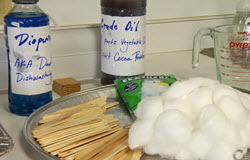
A Hands-On Activity for Children Ages 4-14 The 2010 Deepwater Horizon explosion ultimately led to upwards of 5 million barrels (386 Olympic-size swimming pools) of oil saturating the northeastern Gulf of Mexico. This event threatened 8 national parks and 400 species and heavily impacted the economic well being of Gulf States. Cleanup of the spill proved to Read More
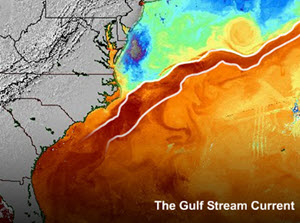
A Hands-On Activity for Children Ages 10-14 An ocean current is the movement of water in the ocean. Oceanic currents are driven by tides, winds, and differences in water density. Density is defined as the number of things, in this instance, molecules, in a certain area. Water density is affected by the number of salt Read More
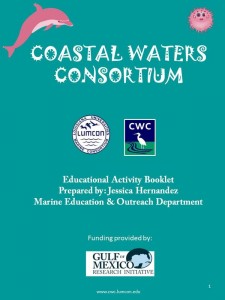
A fun and educational activity book that teaches children about the 2010 Deepwater Horizon oil spill and other marine science topics related to the Gulf of Mexico. Click to download PDF (2 MB) Click to download PDF – Spanish (2 MB)
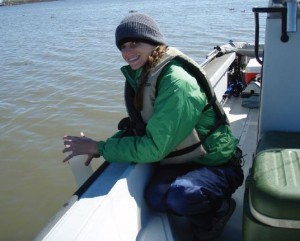
Louisiana State University (LSU) researchers are intimately familiar with the estuaries that surround them. Since 1994, they have studied the water quality of Breton Sound, Barataria Bay and surrounding coastal waters. River flow into these two drainage basins has been drastically altered and both are now fed primarily by man-made diversions and channels. The Deepwater Read More

Scientists with the University of New Orleans were busy monitoring the coastal ecosystem of the Pontchartrain Basin in Louisiana following the Deepwater Horizon oil spill. Their monitoring program aimed to track and evaluate the effects of oiling on eelgrass, oysters and clams, and free swimming fish and invertebrates. The information gained from this study builds Read More
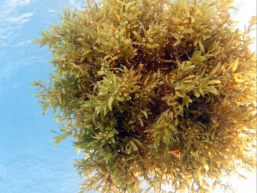
Sargassum seaweed is often found floating freely in both the Atlantic Ocean and the Gulf of Mexico. Take a closer look and you will find a community of organisms thriving around these floating islands. Unfortunately, the Deepwater Horizon oil spill threatened these open-ocean habitats and the animals that depend on them. To assess how pelagic Read More
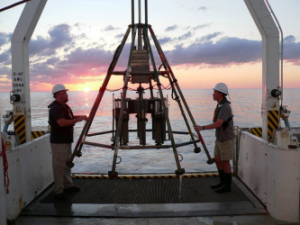
Initially, much of the oil released from the Macondo well during the Deepwater Horizon disaster floated on the surface of the water. Over time, physical processes drove some of the oil onto beaches and into other shallow habitats of the northern Gulf of Mexico. Researchers from the University of Southern Mississippi are trying to determine Read More
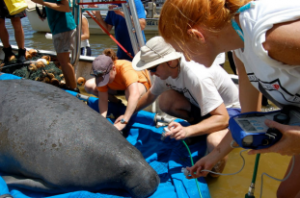
In Mobile Bay, two key species were at risk for contamination as oil entered the surrounding waters after the Deepwater Horizon disaster; the commercially important eastern oyster and the endangered West Indian manatee. These very different species were closely monitored to study effects of oil exposure not only because of their special interest throughout the Read More

The Deepwater Horizon disaster exposed countless plants and animals to harmful crude oil. Though less visible, phytoplankton were also impacted. Scientists from Louisiana State University are investigating what effects the toxic components of crude oil may have on phytoplankton by studying two common species of the Gulf of Mexico. Classroom Activity: Phytoplankton What is a Read More

Salt marshes and seagrass meadows, common across the northern Gulf of Mexico, are highly productive ecosystems that provide critical habitat to many ecologically and economically important species of finfish and shellfish. Juvenile crabs, shrimp and fish that seek refuge in these habitats were threatened during the Deepwater Horizon disaster. Fortunately, scientists are finding no significant Read More
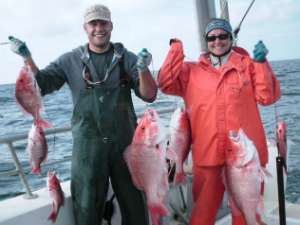
Following the Deepwater Horizon oil spill disaster, NGI funded researchers increased the frequency and expanded the coverage of monthly sampling programs across the northern Gulf of Mexico. Data collected by Dauphin Island Sea Lab scientists after the oil spill, is being compared to historical baseline data, allowing for the potential identification of changes in the Read More
During the Deepwater Horizon oil spill, the potential for oil to be distributed into and around Mobile Bay was unknown. The movement and redistribution of dissolved or very small particles of oil-based substances remained a concern long after the well was capped. Consequently, NGI researchers at the Dauphin Island Sea Lab quickly began sampling the Read More
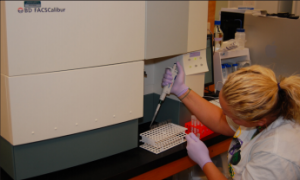
Scientists across the Gulf of Mexico, with support from NGI, are evaluating the impacts of the Deepwater Horizon oil spill on the health of the marine ecosystem. To understand the effects on key elements of the marine food web, one Dauphin Island Sea Lab scientist is comparing microbial samples taken before the oil spill to Read More

The Deepwater Horizon oil spill alone presented a potentially devastating environmental and economic threat to the northern Gulf of Mexico region. Unfortunately, an additional threat loomed as the summer of 2010 marched on and hurricane season became more active. In late June and early July, the oil that had remained offshore for the most part, Read More

